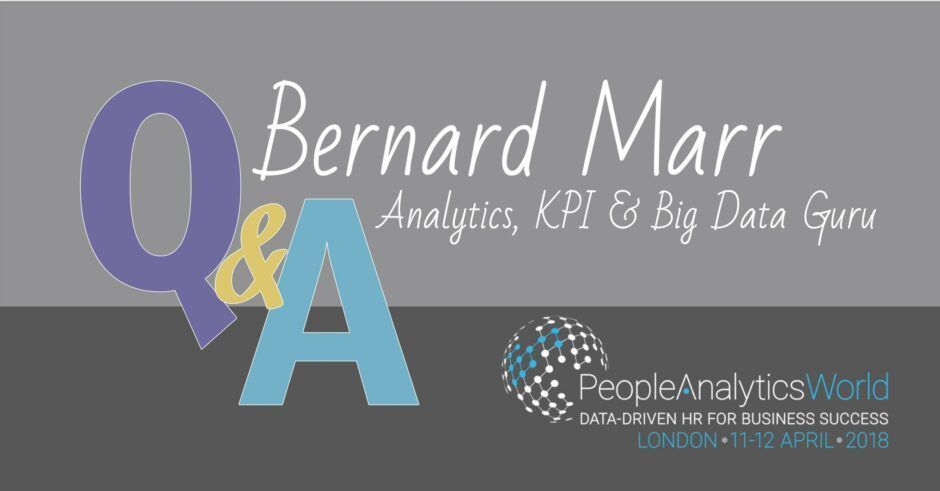We conducted a Q&A interview with Bernard Marr, best-selling author and Analytics, KPI and Big Data Guru, in the build-up to his talk at the People Analytics World event.
When people think of data, they think of numbers. However, there is plenty of video & photo data out there. How can this data become more structured? How can businesses begin to use this technology?
Only 20% of all the data we have in the world is what we would call structured data, numbers that we can neatly put into tables. 80% is unstructured data, things like text, voice, images and video. In the past, we had to make this unstructured data – e.g. a photo of a man – more structured by giving it a tag of ‘man’. Today, we have advanced analytics tools that use machine learning to recognise not only that there is a man on a photo but also whether he is smiling or sad, where he is, and where else he appears on the Internet. Unstructured data is a treasure chest that we are just beginning to open.
What has been the best example of data analytics you’ve seen within an organisation?
I see amazing examples every day working with companies across every sector all over the world. Some of my favourites are an algorithm that analyses data from smart nappies to tell parents when their child is developing an infection long before any physical symptoms appear. I love the algorithm that is able to detect cancer in patients more reliably than experienced radiographers can or the one that can predict heart disease from your smartwatch data. In my book ‘Data-Driven HR’, I discuss many of them as well as smart helmets that detect heat exhaustion, algorithms that predict that an employee might be planning to quit and tools that detect stress levels in people.
How has the sports industry adopted data-driven HR?
I always look at elite sports to see where things are going and I’ve had the pleasure to work with Olympic sports teams as well as top-flight football teams. They all have fully embraced data-driven strategies. In my new book ‘Data-Driven HR’ I discuss how the UK Olympic rowing and cycling teams measure and monitor every tiny detail in training and correlate this with external factors. One Olympic team found that sleep two nights before the competition was essential and now uses that data to determine who will compete. Many elite sports teams now use the data to optimise their training routines and minimise the risk of injury. Body-worn sensors even monitor rugby players for possible concussion and Premier League football teams monitor real-time calorie burn of players so they can substitute those who have reached their limits.
What can other industries learn from how elite sports team have adopted the use of data?
Elite sports team ensure that the data benefits the athlete as much as the team. That means there is a shared interest in collecting and analysing data; this is what companies really need to emulate. Sports teams also ensure transparency and establish trust before they collect and use any data. HR data in companies has huge potential but without shared benefits, transparency and trust, people will rebel against the collection and analysis of data, and rightly so.
What is one key takeaway from your session at PA World?
I am so pleased to present the keynote at People Analytics World and to launch my new book at the same time. In my talk, I will cover many aspects of people analytics; but the one key take away is to be sure you have a really relevant business question to answer before you embark on any journey to collect and analyse data.
This Q&A interview is exclusive for The Business Transformation Network, conducted in partnership with People Analytics World.
Sign up above, if you would like to hear Bernard’s talk at People Analytics World. The BTN is offering all our members 20% off for the event using the discount code “BTN20”.



